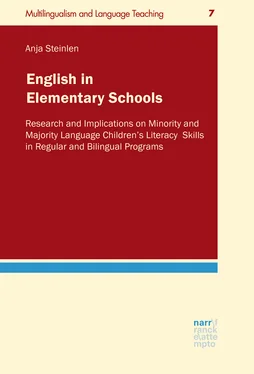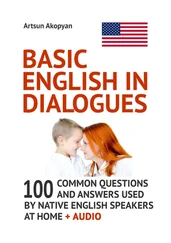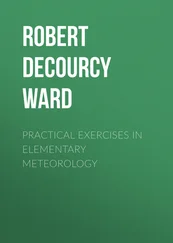Several developmental models of L1 reading have been put forward, most notably by Frith (1985) and Ehri (1995, see Kennedy, Dunphy, Dwyer, Hayes, McPhillips, Marsh, O’Connor & Shiel 2010 for a detailed review). Frith (1985) differentiated three stages, namely the logographic, alphabetic and orthographic stages. In the logographic stage, children use visual or graphic features to read words, while in the alphabetic stage, grapheme-phoneme relations are used to process words. In the orthographic stage, children are finally able to use spelling patterns. Ehri (1995) proposed a similar developmental model which comprises four phases of reading development to identify the significant advances that occur as children learn to read. The four phases are pre-alphabetic, partial alphabetic, full alphabetic and consolidated alphabetic. During the pre-alphabetic phase (which corresponds to Frith’s logographic stage) children rely on selected visual features (and not on letter-sound connections) to read words. Although they are essentially non-readers, they may ‘read’ environmental print from the contextual clues they notice. As children then learn the names and sounds of letters, they progress to the partial-alphabetic phase where they form connections between only some of the letters and sounds (often just the first and final letter sounds). During this phase they cannot segment sounds and will have difficulty decoding unfamiliar words, i.e., they do not have full knowledge of the alphabetic system yet. When children have reached the full-alphabetic phase, they learn sight words (i.e. words that are commonly used in reading and writing) and make connections between letters in written words and the corresponding sounds in speech; however, they use mainly grapheme-phoneme correspondences to identify words. Finally, the consolidated-alphabetic phase represents the children’s growing knowledge and use of specific orthographic patterns, as well as knowledge of morphological patterns and syllabic units.
Such models (as proposed by Frith, Ehri and others) have also been criticized because the order of the stages is fixed and identical for all children; because no stage can be skipped so that proceeding to the next stage results only from mastery of the previous stage; because performance in the middle of each stage is homogenous; and because progression is characterized by qualitative changes, as processing strategies seem to differ radically from one stage to the next (e.g., Sprenger-Charolles & Casalis, 1996).
Unlike L1 reading and writing, reading and writing in an L2 always involves the interaction of different languages. As Koda (2007: 1) points out, this “dual-language involvement implies continual interactions in between the two languages as well as incessant adjustments in accommodating the disparate demands each language imposes”. In other words, L2 reading and writing are inherently more complex than L1 reading and writing.
In Grabe’s view (e.g., 2009; 2014: 10ff.), differences between L1 and L2 reading center around the linguistic resources that are available to the L2 reader. For example, L2 readers have limited L2 language skills (i.e., knowledge of grammar, vocabulary and discourse structure) when they begin reading. Furthermore, L2 students have less experience with reading exposure in the L2 and consequently less practice in L2 reading. In addition, L2 readers need to develop somewhat distinct cognitive processing which involves two language systems, using a joint strategy system, (e.g. Koda, 2005). Interference from the L1 (i.e., cognitive skills, strategies, goals and expectations) may affect L2 reading and either facilitate or hinder its outcomes. Finally, L2 readers rely on different combinations of general background knowledge when reading in the L2 because “world knowledge” (e.g., social and cultural assumptions in texts) may vary between L1 and L2 reading experiences.
So far, L2 reading comprehension has been studied more frequently than L2 reading fluency, and there are far fewer studies dealing with reading fluency in the L2 than in the L1 (e.g., Grabe, 2010). Determinants of L2 reading fluency seem to be the same as those for L1 reading fluency and include automatic word recognition, a large recognition vocabulary, skilled grammatical processing, and automaticity and chunking (i.e., the detection of larger units). Several studies have shown L1 reading fluency skills to affect L2 fluency skills, and L2 reading comprehension to affect L2 reading fluency and vice versa, although the effects so far seem to be rather moderate (see e.g., Grabe, 2010: 73).
Stages in L2 reading seem to parallel those in L1 reading. For example, Verhoeven & Van Leeuwe (2012) extended to L2 reading the Simple View of Reading Framework from Hoover and Gough (1990), which places reading comprehension as a product of word reading (decoding) and listening comprehension. Verhoeven & Van Leeuwe (2012) found that the word decoding skills of L1 and L2 learners (in the long run) seem to develop at more or less equal rates, probably due to the fact that many L2 learners have already acquired essentials of the target language in the domains of phonology and orthography. The same seems to apply to reading fluency: for example, O’Brien & Wallot (2016) reported that the transition from fluent reading of words to texts emerges roughly at the same time for the L1 and the L2, namely in grade 4, i.e., around age 10.
Following Frisch (2013), there are currently three models to account for the relationship between L1 and L2 reading, namely the Interdependence Hypothesis , the Threshold Hypothesis and the Transfer Hypothesis . According to the Interdependence Hypothesis (e.g., Cummins, 1991), the development of L2 reading is affected by the cognitive and general linguistic skills in the L1, and in particular by L1 reading skills. Many studies have shown that cognitive, linguistic and reading skills in the L1 predict L2 reading skills (e.g., Van der Leij, Bekebrede & Kotterink, 2010) and that there is a high correlation between L1 and L2 reading skills (e.g., Skutnabb-Kangas & Toukomaa, 1976). The Threshold Hypothesis posits that “some minimal threshold of proficiency in the L2 must be attained in order for the reader’s first language reading skills to transfer to reading in the second language” (Carroll & Grabe, 2010: 223). Thus, a certain level of L2 proficiency is necessary before L1 reading strategies and skills can be utilized effectively in L2 reading. An important prerequisite is a learning context that promotes overall L2 language proficiency, at least for lower-level students. So far, however, empirical data are scarce regarding the nature of such a threshold. Finally, language proximity and language distance of the two involved systems are important components of the Transfer Hypothesis (e.g., Koda, 2008: Transfer Facilitation Model ) to account for cross-linguistic transfer in reading. In Koda’s view, transfer is “an automated activation of well-established first-language competencies, which is triggered by second-language input” (Koda, 2008: 78). Transfer from L1 to L2 may also occur cross-modally (e.g., knowledge of L1 spoken language may be transferred to L2 reading development), for example, when L1 phonological awareness predicts L2 word recognition. Thus, transfer not only includes a set of rules but also any form-function relationship that the L2 users have acquired in their L1, which may be utilized in their L2 as well.
Writing is a complex task which requires the coordination of fine motor skills and cognitive skills and reflects the social and cultural patterns of the writer’s time. Dyson & Freedman (1991: 58) define writing as “a process-oriented, goal-directed and problem-solving process, which involves the writer’s awareness of the composing process and the teacher’s or peer’s intervention at any time needed”. Writing relies on many of the same structures as speech within a language system, such as vocabulary, grammar and semantics, with the added dependency on a system of signs or symbols, often (as in the case of German and English) in the form of a formal alphabet.
Читать дальше












